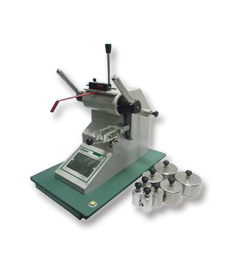
NewsInformation Center
Exploring the Different Types of Tearing Test Methods
2023/06/09
Tearing Test is a widely used testing method in fields such as industry, construction and manufacturing. It can be used to test the durability and stability of various materials such as paper, plastic, rubber, textiles, metal, etc. These materials require a certain degree of tear resistance in various applications to ensure that they can withstand the corresponding force and pressure.


Here are a few different types of tearing test methods:
1. Vertical Tearing Test: Cut the sample along the vertical direction and fix it at both ends of the cut, and then measure its tensile strength by applying force downward.
2. Horizontal Tearing Test: Cut the sample along the horizontal direction and fix it at both ends of the cut, and then measure its tensile strength by applying force to both sides.
3. Micro-Tearing Test: Cut the sample with a micro-notch, and then measure its strength and ductility by stretching the sample.
4. Tensile Tearing Test: Clamp the sample at both ends, apply a tensile force, and then measure the maximum stretching distance of the sample when it resists tearing.
5. Impact Tearing Test: Expose the sample at low temperature for a period of time, and then place it at room temperature for a Tearing Test to measure its impact resistance and crack growth resistance.
The above are several different types of tearing test methods, and you can choose a suitable test method for testing according to the specific situation.
Tearing Test can help manufacturers evaluate the quality of materials and determine whether they comply with relevant standards and regulations. This test method can also be used to compare tear resistance between different materials in order to select the most suitable material for a particular application.
Previous: What are some common standards used for zipper abrasion testing?
N e x t : What factors can affect the results of a rubbing fastness test?



